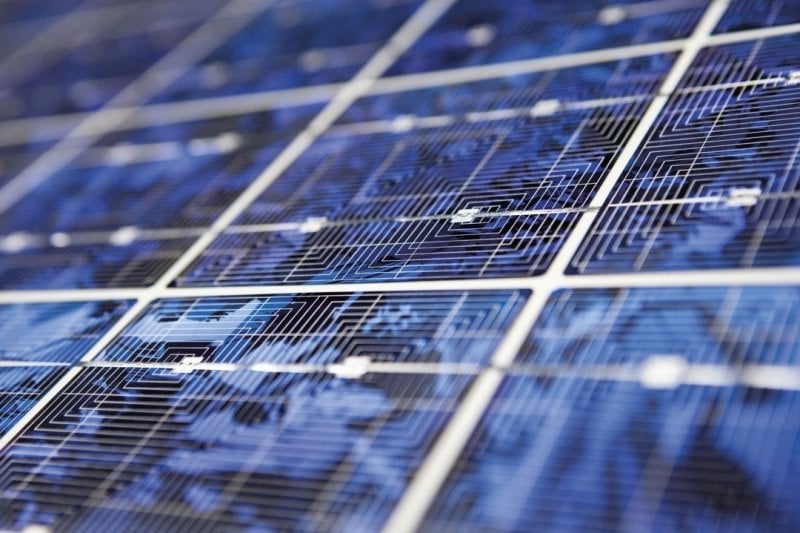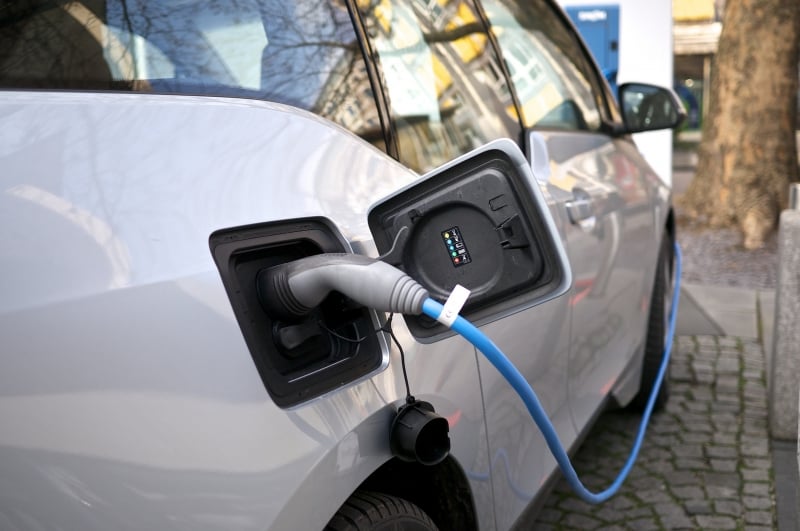As technology continues its ever-changing wave of innovations and updates, engineers must strive to stay ahead of electrical engineering trends. Why? Because the future of electronics influences several industries, such as automotive, healthcare, manufacturing, telecommunications, banking and finance, retail, education, energy, aerospace, and security. In short, regardless of the industry, engineers will be responsible for pioneering and building new ways of interacting with technology.
Read on for a summary of five upcoming trends in electrical engineering and electronics to learn how you can both influence and prepare for the future.
1. Wireless Power Transfer
Did you ever worry about forgetting to pack your charger when getting ready to leave on a trip? Or maybe you did forget it. This trend in electrical engineering eliminates any need for concern or inconvenience.
Though still in its early stages of development and production, wireless power transfer is a promising innovation for the future of electronics.
In short, wireless power transfer (WPT), also known as wireless energy transfer, is the transmission of electrical energy from a power source to a receiver without the use of interconnecting wires. WPT systems use time-varying electromagnetic fields for energy transmission. These systems ride along the same fields and waves as wireless communication devices. Essentially, a receiver in a device picks up the power, which allows for contactless charging, powering, and data communication.

Simple and Convenient
Developed by MIT physicists, wireless power transfer power transfer eliminates the need for chasing chargers or untangling dozens of cords and cables. This technology transfers power to devices through plastic, granite, wood, and even the air.
Innovative Uses
If you think wireless power transfer is limited to your phone or computer, think again. Electric vehicle charging docks, security software, and heart pumps have all been discussed as potential use cases for wireless power transfer. In short, wireless power transfer has transformed or will transform several aspects of our lives.
- Smart Homes: Wireless power transfer can be used to power a range of smart home devices such as lighting, climate control, security systems, and more.
- Automotive: WPT can enable contactless charging of electric vehicles, providing a more efficient and convenient way of powering them up.
- Industrial: WPT can be used to power industrial machinery and equipment, reducing the need for wires and cables and increasing safety.
- Wearables: WPT could be used to power and charge wearables such as fitness trackers, smartwatches, and medical devices.
- Remote Areas: WPT can be used to provide energy in remote areas where it is difficult to connect to the grid.
2. Wearable Tech
While wearable technology is nothing new, its constant innovation and new iterations require the industry to think on its feet (literally) to meet consumer demand and to stay ahead of electrical engineering trends.

Heart Monitors for the People
Some would argue that the original wearable tech piece was the first pair of eyeglasses. But we’d suggest something along the lines of a step counter with a digital display or a Garmin sports watch. What began, then, as an activity-tracking device has spurred a whole range of wearable pieces that send and receive texts, make calls, and alert wearers of possible health conditions.
Forward-Thinking Fashion
But wearable tech is far more than just a watch or an electrical engineering trend. It can become a life-saving device. Electrical engineers have been hard at work developing wearable pieces that prevent injury and workplace accidents. For example, SolePower boots are specifically designed to eliminate on-the-job injuries. The boots contain technology that monitor the wearer’s real-time location, environmental conditions, and even fatigue. All in all, these boots are meant to improve situational awareness and improve safety in the workplace.
Beyond boots, smart clothing is another form of wearable technology that incorporates sensors and other electronics into fabric, tracking physiological signals (heart rate, body temperature, and respiration) and providing feedback to the user. Some brands, such as Sensoria, track user performance and activity metrics, such as heart rate, steps taken, calories burned, and distance traveled. Others, like Spire Health, are designed to send ongoing, real-time health statistics to medical professionals to monitor health conditions. Smart clothing can also be used to connect to other devices such as smartphones, tablets, and laptops.
And there are other potential applications of smart clothing as well, such as tracking location, helping wearers find help when they are lost or in danger, detecting injuries and falls, and alerting emergency contacts.
3. Electric Power Distribution and Supply
Almost gone are the days of customer reliance on power from a single, localized power company. Today’s power generation industry trends dictate a better, more efficient way to generate power with smart grids and microgrids.

Smart Grids
A smart grid is an advanced power grid that uses digital technology to monitor and manage the flow of electricity to improve the efficiency and reliability of the electricity supply. Smart grids use two-way communication between the utility and the consumer, better managing the delivery of electricity and responding to changing demand. This trend in electrical engineering also allows renewable energy sources and storage technologies to provide a more sustainable energy supply.
Microgrids
A microgrid "consists of interconnected loads and distributed energy resources" that comprise "a single controllable entity with respect to the grid." Or to put it more simply, microgrids are self-contained power sources that provide power for smaller, community-based areas.
This grid can operate in two modes, island or connected, depending on need and a community's power usage. There are five types of microgrids, which are used based on a community's location: campus environment, community, remote off-grid, military base, and commercial. Microgrids have several advantages.
- Reliability: They can provide a source of power in the event of an outage. They can also help reduce the frequency and duration of outages.
- Cost: Their small size and decentralized nature makes them more cost-effective than traditional grid infrastructure.
- Sustainability: Renewable energy sources can be incorporated into microgrids, reducing dependence on fossil fuels.
- Efficiency: They provide local power that is tailored to the specific needs of the area.
- Scalability: They are easy to expand and adjust to changing energy needs.
Power in the Hands of the Customer
Not only do microgrids and smart grids improve communication between power supply companies and technology, but they also put the power in the hands of the customer—literally. With smart grids, customers can generate their own power and sell their surplus currents. Microgrids allow communities to generate their power on-site, when they need it. This power generation trend has the potential to change the infrastructure of electricity delivery as we know it.
Learn About Advanced Power Engineering at Michigan Tech
4. Electric Vehicles
Despite years of mass production, electric vehicles still remain a trend in electrical engineering that continues to rise in consumer popularity. Electric cars are becoming mainstream offerings. Though charging infrastructure still needs to be developed, many electric vehicle owners can find readily accessible charging stations in many locations. Consumers might even qualify for tax incentives or credits for purchasing an electric vehicle.
Global national governments worldwide are also accelerating the future of electric vehicles by setting specific benchmarks. For instance, in the U.S., the Biden administration’s wants half of all vehicles sold in 2030 to be electric. Furthermore, the Inflation Reduction Act encourages companies to install EV chargers at their properties. Those who do so can receive a 30% tax credit.

Record-Breaking Popularity
With electric vehicle manufacturer Tesla continuing to break records for production and market value, it's clear the future of electronics is in cars. As consumers become more conscious of sustainability and emissions, the popularity of electric vehicles will only grow. Several major automotive companies are also deeply invested in electrification: Ford, General Motors, Honda, Toyota, and Stellantis are just a few of them.
Multiple Vehicle Options
Despite the name, electric vehicles offer more models than solely battery-operated cars.
- All-electric vehicles: these models operate entirely on battery power, with no engine parts able to use gasoline.
- Plug-in hybrid electric vehicles: Plug-in vehicles offer gasoline and battery-powered fueling options and can operate in an all-electric mode.
- Hybrid electric vehicles: Hybrid models run entirely off gasoline but use an electric motor to lower fuel transmissions.
Innovation Potential
Rising consumer demand will expand the need for innovative updates and production of electric vehicles. Experts predict over 125 million electric vehicles by 2030, meaning there’s not only potential for investment but also for electrical engineering trends to influence future advancements.
Read More About the Future of Electric Vehicles
5. The Internet of Things
If there’s one subject matter knowledge critical to the success of an electrical engineer, it’s the Internet of Things. The Internet of Things (IoT) is a network of connected devices that can communicate with each other and with other devices. These devices can be anything from phones and computers to sensors, actuators, and other electronic components. Through the IoT, data can be collected, analyzed, and used to control and automate processes.

Room for Innovation
Aside from IoT knowledge for routine maintenance and updates, this trend in electrical engineering continues to have immense potential for innovation. Some of the more notable companies who employ engineers with IoT experience include Amazon, IBM, Microsoft, Intel, Cisco, and Samsung. These companies, which offer a range of IoT services and devices, require engineers to design, develop, maintain, and support them.
Room for Improvement
While there are standard connections that consumers have come to expect, there’s always room for improvement. Consider the upgrade from 4G to 5G. 5G networks, which are faster and more reliable than 4G networks, provided faster download and upload speeds, greater bandwidth, and lower latency. This upgrade allowed more devices to be connected to the internet at once, and for these devices to communicate more quickly and efficiently. 5G also improved more advanced applications, such as augmented and virtual reality.
Still, the IoT has innovated electrical engineering in several ways, such as in the following:
- smart homes
- smart cities
- industrial automation
- smart meters
- home energy storage systems
As the future of electronics increasingly requires an internet connection, the IoT is an electrical engineering trend that won't be going away any time soon.
Discover How Michigan Tech Can Help You Influence These Trends.
Electrical engineers have the potential to create and define our future. Whether through cars or power generation trends, smart houses or smart boots, trends in electrical engineering continue to influence the future of electronics. Who knows—you might discover something we have yet to imagine.
And Michigan Technological University is the ideal place to get started.
MTU is ranked among the Best Engineering Schools in the nation by the US News and World Report and one of the top 25 STEM colleges by Forbes. We also offer the #3 ranked program in the Best Online Master's in Electrical Engineering Programs of 2022.
Flexible and research-based, our accredited online electrical and computer engineering degree, which has a 100% graduate employment rate, offers specializations in power systems, signal processing, and communication theory. MTU also offers graduate certificates in advanced electric power and hybrid electric vehicle drive engineering.
But these programs are just a few options.
Explore other online programs at Michigan Tech's Global Campus.
Author's Note about Attribution: both the lightbulb and electric car images, which are by unknown authors, have a CC by 3.0 license.
